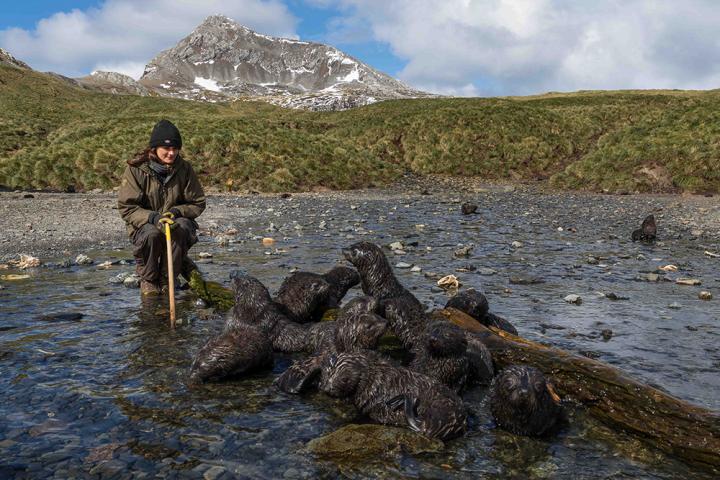Emily Humble
Research Fellow in Conservation Genomics

I am a conservation geneticist with a particular interest in using genomic tools to inform conservation management and wildlife law enforcement.
I joined the R(D)SVS and the Roslin Institute in 2018 as a Research Fellow in Conservation Genomics. I am currently working on genetic datasets of scimitar-horned oryx, manta rays and critically endangered guitarfish and wedgefish to help inform future management, and am using hand-held sequencing technologies to aid in elasmobranch fisheries monitoring and law enforcement in Sri Lanka. I also contribute to the Masters Programme in Wildlife Conservation Genetics with Wildlife Forensics.
I completed my PhD at Bielefeld University and the British Antarctic Survey where I developed a genomic toolkit for the Antarctic fur seal to investigate inbreeding, population structure and the impacts of hunting. Prior to this, I worked on adaptive divergence in lamnid sharks using transcriptome sequencing at Imperial College London. I have a particular interest in manta and devil rays and work closely with the Manta Trust on a global manta ray genetics project.
Please send me an email if you'd like to get in touch.
Education:
| 2014-2018 Doctor of Philosohy (PhD), Bielefled University and the British Antarctic Survey |
| 2012-2013 MRes Biodiversity Informatics and Genomics, Imperial College London |
|
2008-2011 BSc Biology, University of Sussex |
Key publications:
Hosegood J., Humble E., Ogden R., de Bruyn M., et al. (2020) Phylogenomics and species delimitation for effective conservation of manta and devil rays. Molecular Ecology. 2 (24), 4783-4796.
Humble E., Dobrynin P., Senn H., Chuven J., et al. (2020) Chromosomal-level genome assembly of the scimitar-horned oryx: Insights into diversity and demography of a species extinct in the wild. Molecular Ecology Resources. 20 (6), 1668-1681. Perspective piece.
Humble E., Paijmans A.J., Forcada J ., Hoffman JI. (2020) An 85K SNP array uncovers inbreeding and cryptic relatedness in an Antarctic fur seal breeding colony. G3: Genes, Genomes and Genetics. 10 (8), 2787-2799.
Stoffel M., Humble E., Paijmans A.J., Acevedo-Whitehouse K., et al. (2018) Demographic histories and genetic diversity across pinnipeds are shaped by human exploitation, ecology and life-history. Nature Communications. 9, 4836.

